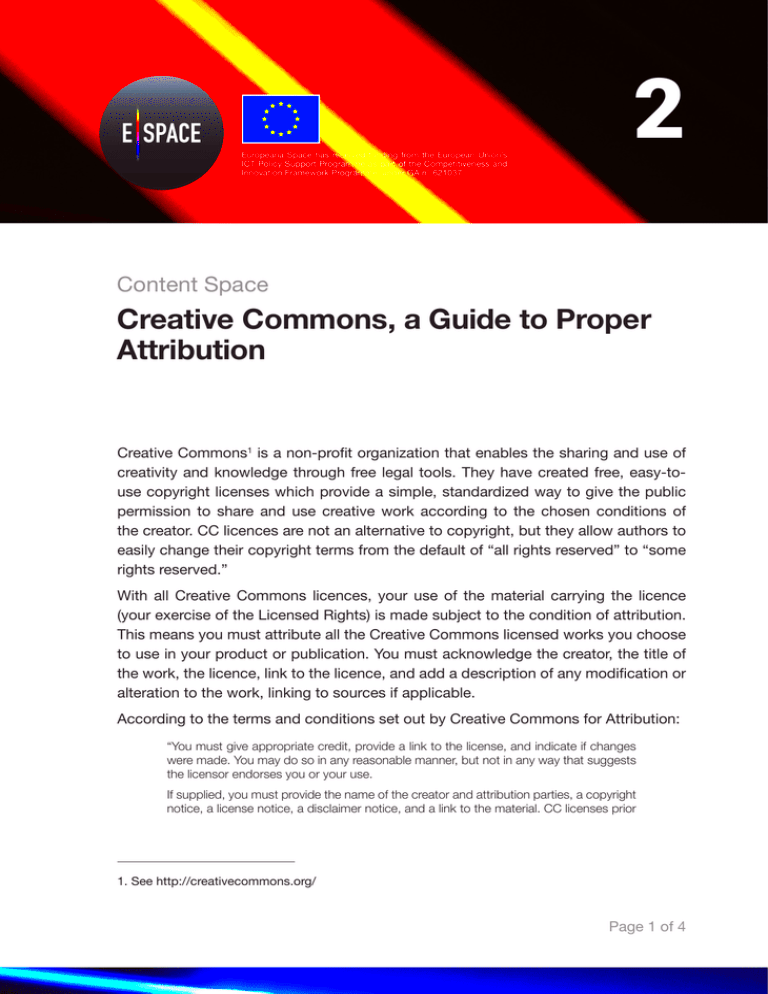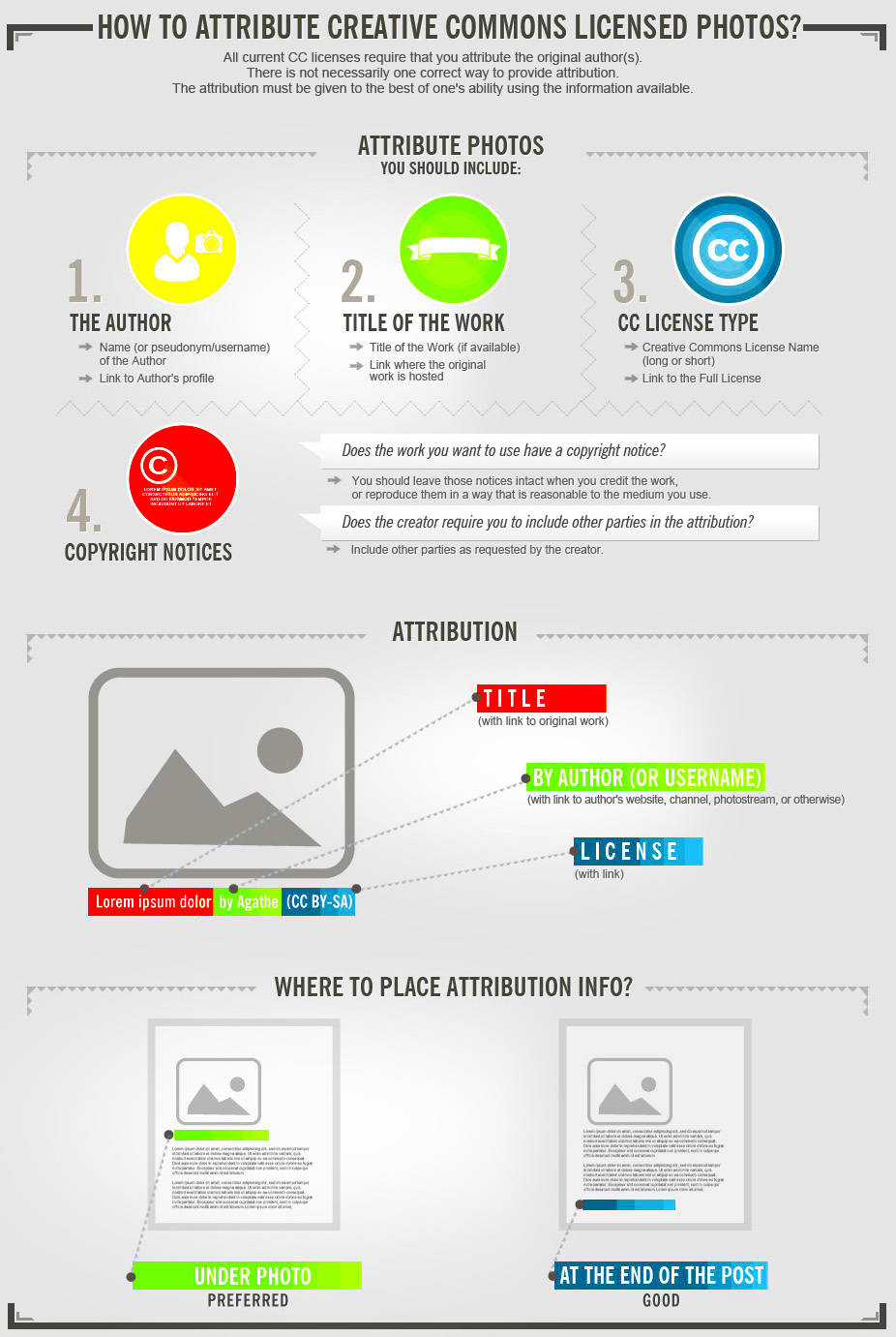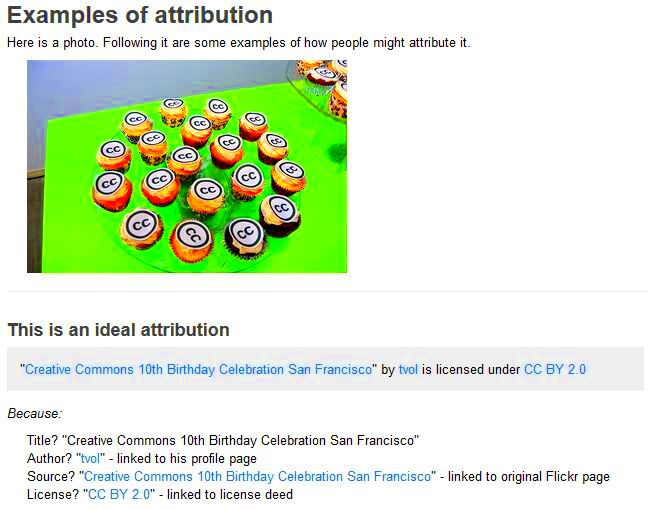When using images on your website or in any project, it's important to give proper credit to the creators. This practice is known as image attribution, and it ensures that photographers, designers, and artists are acknowledged for their work. Whether you're using a photo from a stock website or sharing someone else's creative content online, proper attribution is not just a legal requirement—it's a way to show respect for the original creator's rights.
In this post, we'll walk you through why image attribution matters, how to do it correctly, and why it should be an integral part of your content creation process.
What is Image Attribution?

Image attribution refers to the act of giving credit to the creator of an image when you use it. This is important in the world of digital content, as it acknowledges the intellectual property rights of photographers, graphic designers, and other visual artists. Simply put, it's about saying "thank you" to the person who created the
Attribution typically involves providing specific details about the image’s source, which may include the following:
- Photographer's name or username – The person who took or created the image.
- Title of the image – If the image has a specific title, you should mention it.
- Source or link – A direct URL or reference to where you found the image.
- License type – Details about the image’s licensing (e.g., Creative Commons) and whether or not you can use it for commercial purposes.
Different platforms and image licenses may have varying requirements for attribution, so it’s important to follow the guidelines that apply to the image you're using.
Also Read This: Tips for Concealing Your Facebook Friend List on Mobile Devices
Why is Image Attribution Necessary?

Providing proper attribution is not only a way to show respect for the creators but also a requirement in many legal frameworks surrounding intellectual property. Here’s why image attribution is necessary:
- Legal compliance: Many images are protected by copyright laws, and failing to provide attribution can lead to legal repercussions, including fines or removal of your content.
- Ethical considerations: Giving credit where it's due is an ethical responsibility. It ensures that creators are compensated for their work, either through recognition or payment.
- Building relationships: By giving credit to other creators, you build goodwill within the creative community. This can lead to opportunities for collaboration and networking.
- Supporting the creative economy: Image creators, especially independent photographers and artists, rely on attribution to gain exposure and opportunities for paid work.
In short, providing proper attribution fosters a respectful and legally compliant environment for everyone involved in creating and using digital content.
Also Read This: Understanding ChatGPT API History and Evolution
How to Properly Attribute an Image

Attributing an image properly is essential to avoid any legal or ethical issues. It’s not just about slapping a name next to a photo—there are specific details you need to include to ensure full compliance with image licenses. The way you attribute an image depends on the license under which it’s shared. Here’s a simple guide to help you properly attribute an image:
- Step 1: Identify the creator – Always include the photographer or creator's name (or username) as specified in the license or image description.
- Step 2: Mention the title of the image – If the image has a title, make sure to include it. If the title is unavailable, a description of the image can suffice, though it’s best to look for the title.
- Step 3: Specify the source – Provide a link or reference to the source where you found the image. This might be a URL to a stock image website or the creator's personal portfolio.
- Step 4: Include the license type – Let others know the terms under which the image is being used. If it’s a Creative Commons image, you might need to include the specific type of license (e.g., CC BY, CC BY-SA) and whether the image is free for commercial use.
Here’s an example of proper attribution:
Photo by [Photographer's Name] on [Website Name] - [License Type]
By following these steps, you ensure that you're respecting copyright laws and acknowledging the creator for their work.
Also Read This: How to Render an Image Sequence from ComfyUI: A Complete Guide
Common Image Licensing Types and Their Attribution Requirements

When using images, it's important to understand the different types of licenses that govern their use. Each license has its own set of rules regarding attribution and the image's intended use. Below are some common image licenses and their attribution requirements:
| License Type | Attribution Requirements |
|---|---|
| Creative Commons (CC) | Typically requires the photographer's name, image title, source, and license type. Commercial use may or may not be allowed based on the specific CC license. |
| Public Domain (CC0) | No attribution required. You can use the image for any purpose, even commercially, without needing to credit the creator. |
| Royalty-Free | Attribution is generally not required, but it’s always a good practice to credit the creator if the license does not specifically state otherwise. |
| Editorial Use Only | These images are often free to use with proper attribution, but they can only be used in non-commercial settings, such as news articles or blogs. |
Always read the specific license attached to the image you're using. Different licenses might have different restrictions and requirements when it comes to attribution, and it’s essential to comply with those to avoid misuse or copyright violations.
Also Read This: Understanding Ownership and Licensing of NASA Pictures on Alamy
Where to Place Attribution for Images
Properly placing image attribution is just as important as providing the right information. The location of attribution depends on the platform and format of your content. Here are some best practices for where to place attribution for images:
- Websites and Blogs: Place the attribution near the image, often directly beneath it or in a caption. If the image is used within a body of text, you can also place the attribution at the end of the post or page.
- Social Media: If you’re sharing an image on platforms like Instagram or Facebook, it’s common to place attribution in the caption or the first comment. Be sure to include the creator's name and the license type, if applicable.
- Print Publications: In print media, the attribution should be placed in a visible location, typically under the image or in a credits section of the publication.
- Presentations or Videos: For slideshows or video content, it’s common to mention the image credits on a final slide or screen. Alternatively, you can display the attribution at the bottom of the image throughout the presentation.
Whatever platform you're using, the key is to make the attribution clear and visible. Avoid hiding it in footnotes or obscure places—credit the creator in a way that’s easy for your audience to see and understand.
Also Read This: Exploring the Availability of GIF Animations on 123RF
What Happens if You Don’t Provide Proper Attribution?
Not giving proper attribution for an image can lead to serious consequences—both legally and ethically. Copyright laws are in place to protect the rights of creators, and ignoring these can put you at risk for fines, legal actions, and damage to your reputation. Here's what could happen if you fail to provide proper attribution:
- Legal repercussions: If an image is protected by copyright, the creator can take legal action against you for using their image without permission or proper credit. This can result in expensive fines or having your content removed.
- Loss of trust: Not crediting creators can make you seem unprofessional or disrespectful. In the creative community, reputation is everything, and failing to credit can damage relationships with fellow creators.
- Removal of content: Websites like stock image platforms, social media networks, and even search engines can remove your content if you fail to meet licensing requirements. This can lead to your content being taken down or your account being suspended.
- Ethical issues: Taking someone else's work and passing it off as your own isn’t just illegal—it’s unethical. Proper attribution is a simple way to show respect for the hard work that goes into creating visual content.
In short, skipping image attribution isn’t worth the risk. Whether you're using an image for a blog post, social media, or a presentation, always make sure you're following the proper licensing guidelines to avoid these consequences.
Also Read This: Following Dailymotion Channels on Apple TV Effortlessly
Frequently Asked Questions (FAQ)
Here are answers to some of the most common questions people have about image attribution:
- Do I always need to give credit for free images?
Yes, even if an image is free, such as those under a Creative Commons license, proper attribution is usually required. Always check the license. - What if the creator’s name is missing?
If the creator’s name is unavailable, try to find other ways to give credit. You can include a source link, and if you can’t find the creator’s name, indicate that it’s “author unknown” or “creator not listed.” - Can I use an image without attribution?
Yes, but only if the image is in the public domain or if the specific license doesn’t require attribution (e.g., CC0). Make sure to confirm the licensing details before using it. - What if the image has a "no attribution" license?
Some images, like those with a CC0 license, don't require attribution. But, even though it’s not legally required, it's still a good practice to credit the creator when possible. - Can I alter an image if I provide attribution?
It depends on the image’s license. Some licenses allow you to modify the image as long as you provide proper attribution, while others may prohibit changes. Always read the specific license terms.
Attribution can sometimes be confusing, but as long as you understand the basics and follow the licensing requirements, you’ll be in the clear!
Conclusion: Importance of Image Attribution
Providing proper image attribution is not just a legal obligation—it’s also a sign of respect for the creative work of others. Whether you’re a blogger, marketer, or designer, giving credit where it’s due helps build trust, supports the creative community, and keeps you in line with copyright laws. It’s a simple step that can save you from legal troubles and ensure that creators get the recognition they deserve.
Always make sure to check the licensing details of any image you use, and provide proper attribution whenever required. By doing so, you help foster a respectful and legally compliant environment for digital creators and users alike.

 admin
admin








